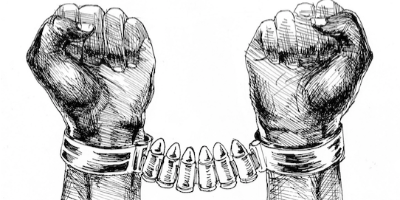jan 19, 1918 - Watsonville Riots
Description:
The Watsonville riots was a period of racial violence which took place in Watsonville, California from January 19 to January 23, 1930. Involving altercations between Filipino American farm workers and local residents opposed to immigration, the riots highlighted the racial and socioeconomic tensions in California's agricultural communities.The Immigration Acts of 1917 and 1924, which targeted non-whites of Asian descent, allowed Filipinos to answer the growing demand for labor on the U.S. mainland. From the 1920s on, "overwhelmingly young, single, and male" Filipinos migrated to the Pacific Coast, joining Mexicans in positions previously filled by Chinese, Japanese, Koreans, and Indians. In California, Filipinos were the dominant Asian farm labor force during the next two decades.
Filipino laborers' resilience in harsh working conditions made them favorite recruits among farm operators. In California's Santa Clara and San Joaquin Valleys, Filipinos were often assigned to the backbreaking work of cultivating and harvesting asparagus, celery, and lettuce.
Due to gender bias in immigration policy and hiring practices, of the 30,000 Filipino laborers following the cycle of seasonal farm work, only 1 in 14 were women. Unable to meet Filipinas, Filipino farm workers sought the companionship of women outside their own ethnic community, which further aggravated mounting racial discord.
In the next few years, white men decrying the takeover of jobs and white women by Filipinos resorted to vigilantism to deal with the "third Asiatic invasion." Filipino laborers frequenting pool halls or attending street fairs in Stockton, Dinuba, Exeter, and Fresno risked being attacked by nativists threatened by the swelling labor pool as well as the Filipino's presumed predatory sexual nature.[8]
In October 1929, Filipinos at a street carnival in Exeter were shot with rubber bands as they walked with their white female companions. In response to the knifing of a heckler, a mob of 300 white men led by then Chief of Police C. E. Joyner burned the barn of a rancher known to hire Filipinos; and Joyner ordered the shutdown of a nearby labor camp. According to local press, the riot was caused primarily by Filipinos' insistence on equal treatment by white women.
Near midnight on January 18, 1930, 500 white men and youths gathered outside a Filipino dance club in the Palm Beach section of Watsonville.[11] The club was owned by a Filipino man and offered dances with the nine white women who lived there. The mob came with clubs and weapons intending to take the women out and burn the place down. The owners threatened to shoot if the rioters persisted, and when the mob refused to leave, the owners opened fire. Police broke up the fight with gas bombs. Two days later, on January 20, a group of Filipino men met with a group of white men near the Pajaro River bridge to settle the score. A group of hispanic men then arrived and took sides with the whites. The riot began and continued for five days.
Hunting parties were organized; the white mob was run like a "military" operation with leaders giving orders to attack or withdraw. They dragged Filipinos from their homes and beat them. They threw Filipinos off the Pajaro River bridge. They ranged up the San Juan road to attack Filipinos at the Storm and Detlefsen ranches; at Riberal's labor camp, twenty-two Filipinos were dragged out and beaten almost to death. A Chinese apple-dryer that employed Filipinos was demolished; shots were fired into a Filipino home on Ford Street; and 22-year-old Fermin Tobera died after being shot in the heart when he was hiding in a closet with 11 others, trying to avoid the rounds of bullets fired at a bunkhouse in Murphy Ranch in San Juan Road on the 23rd.
The violence spread to Stockton, San Francisco, San Jose, and other cities.[13] A Filipino club was blown up in Stockton, and the blast was blamed on the Filipinos themselves.[15] In Gilroy, masked men warned a Japanese farmer to discharge his Filipinos. Fifty unemployed whites and Filipinos were hustled out of town by police, trying to preempt possible fighting.
Many Filipinos fled the country.
The five days of the Watsonville riots had a profound impact on California's attitude toward imported Asian labor. As a result, Filipino immigration plummeted, and while they remained a significant part of the labor in the fields, they began to be replaced by Mexicans.
Added to timeline:
Date:
jan 19, 1918
Now
~ 107 years ago
